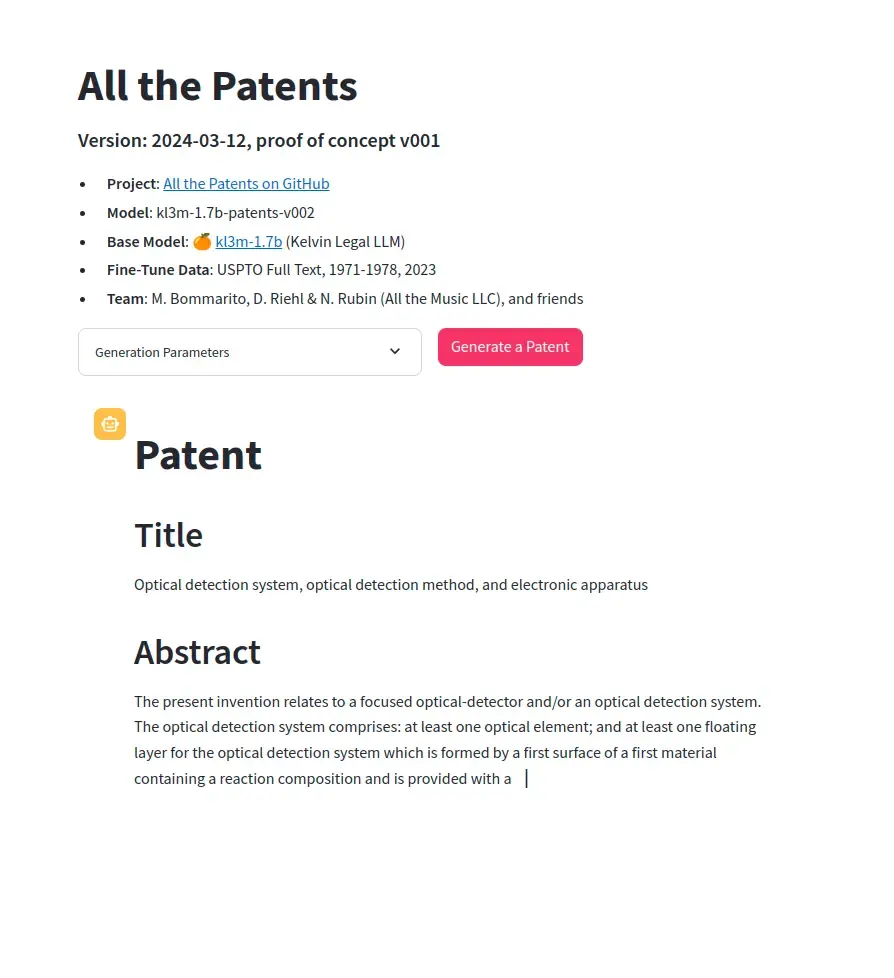Generating and publishing obvious inventions to improve the patent system
In collaboration with:

Patents are meant to encourage innovation by granting temporary monopolies on inventions. However, the system often grants patents for “obvious” ideas, creating barriers to further innovation. Our project aims to address this issue by generating and publishing obvious inventions, making them easily searchable and accessible to patent examiners and the public.
We use a small, GPT2-sized language model called kl3m-170, trained on a clean, copyright-free dataset. This model is fine-tuned on two tasks:
This approach allows us to generate new patents using either technique, ensuring a diverse range of “obvious” inventions.
The project is in its early stages, focusing on:
We’re working to make the generation process as efficient and accessible as possible. If you’re interested in contributing or learning more, check out our GitHub repository:
[Link to GitHub repository]
Join us in our mission to improve the patent system and foster true innovation!
Don't be shy. We'd love to hear from you.